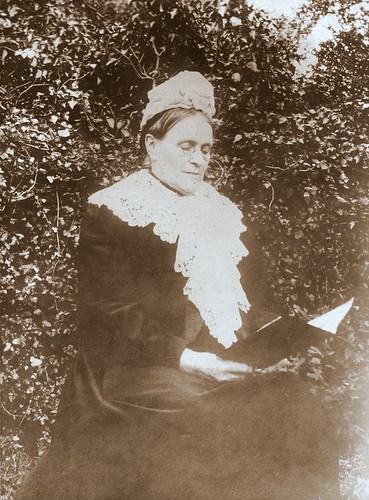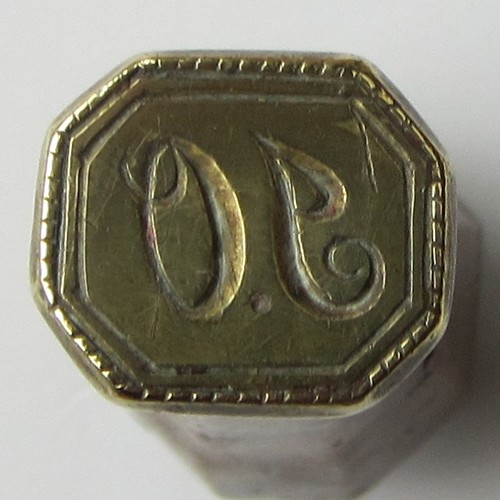
Jane Talbott
Born: 2 Aug 1829 at Sparkford, Somerset, England
Parents: Samuel Talbott 1797-1870 and Charity Way 1792-1866
Siblings: James Talbott 1821-1907, Mary Ann Talbott 1823-1895, Sarah Talbott 1825-1837, Thomas Talbott 1828-1829, Elizabeth Talbott 1832-1920?, Susanna Talbott 1836-1866
Married: John Oram 1824-1907 on 18 July 1847 at Rimpton, Somerset, England
Offspring: John Samuel Oram 1847–1913, Jane Charity Oram 1849–1945, Emily Talbott Oram 1851-1852, Arthur Talbott Oram 1853–1919, Charles Somerset Oram 1855–1856, James Henry Oram 1857–1918, Frances Albert Oram 1858–1859, Alfred William Oram 1861–1942, Caroline Susannah Oram 1863–1947, Emma Agnes Oram 1865–1955, George Oram 1866-1866, Lily Louisa Oram 1869–1952, Edith Mabel Oram 1870–1951, Letitia Kathleen Oram 1872–1942
Died: 29 April 1906 at Little Weston, Somerset, England
In the 1960’s when Jane’s great-granddaughter-in-law Daphne wrote an essay on Jane’s life she started by quoting from Jane’s “In Memoriam Card” Card of May 1906:
“It is not easy in a short paragraph to do justice to a character in which so many excellent qualities were associated. Doubtless one of the principal charms of her character which pervaded, animated, and endeared the whole was warmth of heart, a cordial kindness of disposition ….. she was often occupied in thinking of the happiness of others and in praying fervently for them ….. Her humility and fidelity, her hospitality and goodwill her abhorance of evil, and her rigid integrity her industry and economy, all tend to point her out as a character that will live in the remembrance of those who best knew her as a pattern worthy the imitation of those who may have similar obligations to fulfil or similar trials to endure.“
Daphne continued [revised and with 2013 comments in square brackets] :
She was remembered with love and affection over 60 years later by her grandchildren and two of her neighbours at Little Weston [Somerset, where Jane died].
Jane must also have been a woman of great courage. In 1853 she travelled alone [probably not alone, this came from Daphne’s least reliable source] to Ireland with her three children, including baby Arthur. It was a nightmare journey with an uncomfortable sea crossing, then by primitive railway across Ireland to just as far as the train could take them. The rest of the way was by trap or jaunting car. The only home awaiting them when they got there was the tower of the ruined castle (Maryland) which swayed in the wind. When Jane woke up she saw baby Arthur being cared for by an old countrywoman smoking a pipe.
[One of Jane’s grandchildren told Daphne that] one day a ‘potential assassin’ walked across the hall at Wilford Lodge [though this was probably Burrishoole Farmhouse] and into the parlour, where Jane talked to him calmly and with much dignity. Mercifully he went away again quite peaceably after Jane’s courteous treatment.
Jane was a great maker of homemade medicines and her special ointment was sought after for miles around. It was made of lard, olive oil, resin and beeswax.
When the family lived at Lovington Jane and her young daughters used to attend the Methodist Chapel in the village, whilst John attended the Church of England Church at Wheathill. Jane truly seems to have been a remarkable woman – small wonder her family loved her almost to a point of adoration.
Jane’s granddaughter’s memories
The family have written memories of two of John and Jane Oram’s granddaughters visiting them at their retirement cottage in Little Weston in the parish of Weston Bampfylde, Somerset. The most vivid reminiscences were from Lily:
“From the moment you got out of the train at Sparkford station and piled into the trap borrowed from the Isaacs or into Grandfather’s little donkey carriage, it was pure happiness. We loved the moment of turning off the high road into the lane that led first to King Brains Farmhouse, then past the Perry’s house and orchard and at last to Grandfather’s. (We were proud of the fact that Little Weston was so small – only 7 houses – so distinctive!)
We rushed through the front door into the flagged passage and turned with one accord into the kitchen where we knew three things would await us -the glorious smell of oil (why so glorious?), an egg-timer on the wall (why was this so important) and the wide-open chimney to which we rushed to peer up at the sky showing above it.
In the front kitchen on the other side of the passage, was a screen that Aunt Jane had once pasted with pictures. There was the settle before the fire, the mullioned window, the latched door, leading to the stairs. And out in the courtyard were other things to visit – the pump (how we hated the taste of the water!), the old carved table (what was the date on it – something pretty remote), and the step down into the dark cool dairy. And then through the iron gate into the farmyard – what unending interest! Hens, hen’s eggs, the feeding of hens, the way they roosted, going round in the evening dropping the peculiar little hatches to shut them in.
The shed where Whisky the donkey lived, the apple loft above with stone steps leading to it -such venerable steps, centuries old we thought. And the orchard – that was wonderful. There was also the attic in the house, reached by a ladder and an object of curiosity to us. Mercifully, no-one ever told us about the ghost who was said to make loud noises up there; nor of the mysterious sealed room which grand-father had once been persuaded to open up and then had had it sealed up again without letting anyone know what was in it.
(Strange too that no-one ever told us about how King Arthur had had his camp up on Cadbury Castle a few fields away and ridden with his Knights along the causeway which had swept round along the top of the orchard and through what is now King Brain’s farmyard.)
There’s a special memory of an evening stroll with Annie, grandmother’s trusted servant-girl, in a lane with hollyhocks growing at the cottage doors of a Sunday morning on the way to church when every leaf and blade of grass seemed alive with sunshine; of rides through the lanes in the donkey carriage with ragged robin and cow parsley on each bank almost meeting in the middle of the road; of hay carts in the fields; primroses under the hedge as you turned up the Weston Bampfylde lane; the mounting steps on the house wall; the little yellow flowered plant that pushed through the slats of the fence, the way grandmother’s bedroom window looked straight out on to the Perry’s orchard; Grandfather’s churchwarden pipe and a two-handled cider mug; the yellow dignity of the parlour; grandmother’s indoor lace caps.
It was a sad time for all the family when Grandmother began to fail in the winter of 1905 and died in the following spring, lovingly attended by her six heartbroken daughters. Grandfather lived on another year. Then he too was put to rest in Weston Bampfylde Churchyard.”
Newspaper Obituary following Jane’s death
Jane’s family background
Jane was one of seven offspring of Samuel Talbott and Charity nee Way of Sparkford in Somerset. The Talbott family were skilled woodworkers. Jane’s grandfather Philip Talbott was a carpenter in Sparkford; the family has a bill for minor work he carried out in a local church. Jane’s father made wagon wheels for coaches working out of Exeter, though by the time of Jane’s marriage in 1847 he had become a builder.

photograph taken by John S. Oram on a visit from Cleveland, Ohio, USA
Jane’s brother was also a carpenter in Sparkford, he built the pulpit that is currently in Sparkford church and was a trusted member of his community. The processional cross of Sparkford Church bears the inscription “To the Glory of God and the memory of James Talbott for 35 years parish clerk of Sparkford. This cross was presented by past and present parishioners.”


